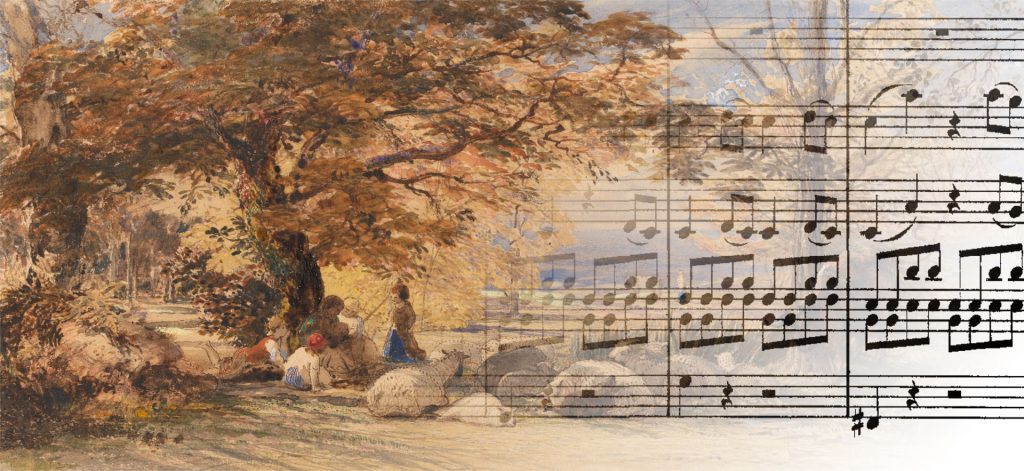Making Overtures: Programmatic vs Absolute Music
This month, we are offering a new, recurring segment about how to listen to and enjoy the music that we play. We know that we serve a wide variety of patrons, and we want to provide some insight into the music that we perform, no matter your experience level. After all, we are all still learning about music and finding new ways to appreciate what we hear. In this first edition, we’d like to explore a pair of terms that divide symphonic music into two categories: programmatic music and absolute music.

Generally, in programmatic music, a composer portrays a definite picture of events or objects, or even an entire story. You may hear a representation of a thunderstorm, a braying donkey, a clock striking 12, or Juliet’s beating heart.
On the other hand, in absolute music, the composer offers us pure music for its own sake. We relate to its rise and fall, tension and relaxation in a more visceral way, without having to associate it with prescribed imagery.
How can one recognize the difference? The biggest clue is the title. Beethoven’s Pastoral Symphony, Grofe’s Grand Canyon Suite, Prokofiev’s Cinderella and Tchaikovsky’s Romeo and Juliet, are all examples: we can prepare our imagination to create pictures based on what the music directly suggests. However, for Mozart’s simply titled Symphony No. 40, expect the fundamental qualities of melody, harmony and rhythm to speak directly to the inner spirit through our shared experience of the nature of life. Yet, music from either category can have the power to make us laugh or cry.
The boundary line between these two types of music is not always clear since you, as the listener, bring your own point of view. You may find that a work considered to be absolute music calls forth specific imagery within your own mind. Bringing your own creative process to the experience can make you a more active and engaged listener.
Happy listening!